There was something magical about stepping through the door of Grandma’s house and feeling like you’d walked straight into a time capsule. For many of us who grew up in the ’70s, ’80s, and ’90s, visiting Grandma meant entering a perfectly preserved slice of 1950s Americana. The sights, sounds, and smells were comforting constants in our ever-changing childhoods—a place where time seemed to stand wonderfully still while the outside world raced forward.
1. The Landline Phone with the Extra-Long Cord

Grandma’s kitchen phone was always the same rotary dial model she’d had since the Eisenhower administration, usually in harvest gold or avocado green. The coiled cord had been stretched to impressive lengths over decades of use, allowing her to reach nearly any part of the kitchen or dining room while talking to her bridge club friends. You never truly appreciated the modern miracle of cordless phones until you watched Grandma perform cooking acrobatics while cradling the heavy handset between her ear and shoulder. According to WIRED, the clock is ticking fast on the landline, potentially cutting these long cords for good.
The phone nook often featured a tiny built-in seat and a phone book so worn the pages were soft as fabric. Grandma’s personal directory was scribbled right on the wall beside the phone or in a special little book with alphabetical tabs, filled with names of people you’d never met but somehow knew through her stories. The distinctive sound of the rotary dial clicking back into place after each number was its own form of music—a rhythm from another era that announced an important call was being placed.
2. The Medicine Cabinet Time Capsule
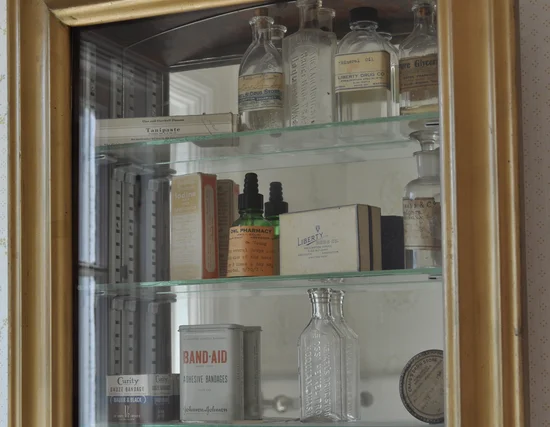
Opening Grandma’s medicine cabinet was like discovering an archaeological dig of mid-century health and beauty products. Ancient bottles of Mercurochrome with its alarming bright orange-red liquid stood next to mysteriously named elixirs like Sloan’s Liniment or Dr. Lyons Tooth Powder. The cabinet always contained at least one product that had been discontinued decades ago, but Grandma had saved the last bit “just in case.” According to Cabinet Magazine, relatively speaking, this feature is somewhat recent, but it sure did leave its mark.
The bathroom itself featured pink or mint green tile that extended halfway up the wall, with matching colored fixtures that had never been replaced. A fuzzy toilet seat cover and matching rug set (which everyone now knows is a terrible idea) added comfort to the room, while a single bar of Ivory soap that seemed to last forever sat in a well-worn soap dish. The towels were often thin from years of washing but still impossibly soft, and there was always a decorative guest soap in the shape of a rose or seashell that no one was ever supposed to actually use.
3. The Indestructible Pyrex Collection
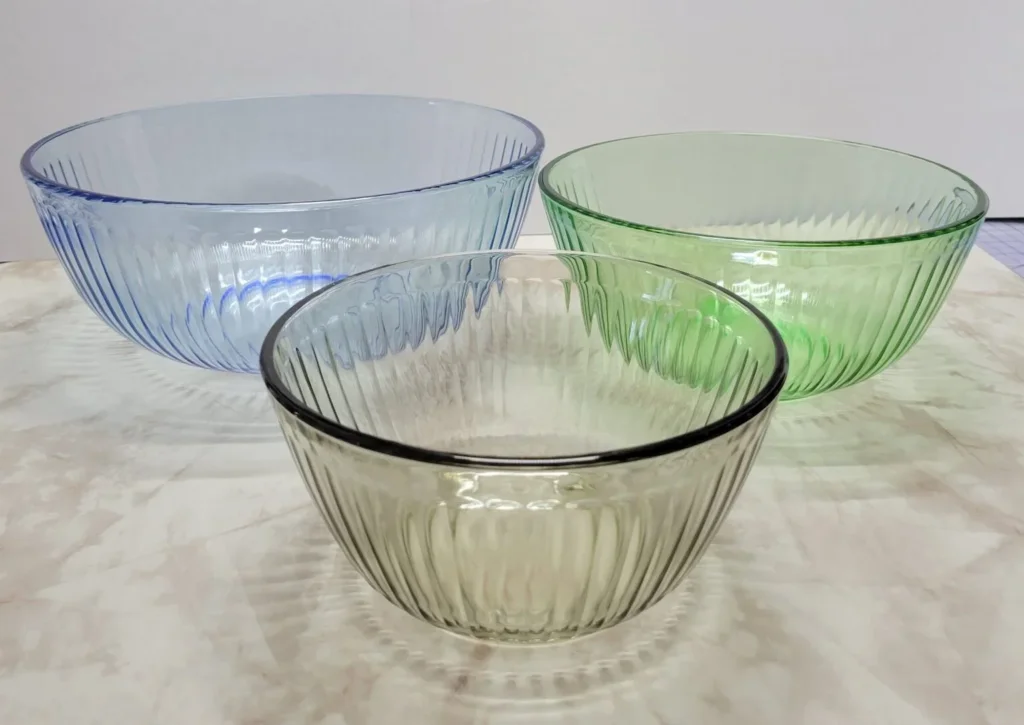
Grandma’s cupboards contained a rainbow of Pyrex mixing bowls and casserole dishes in harvest gold, avocado green, and that particular shade of orange that existed only in mid-century kitchens. These workhorses of the kitchen had survived thousands of potlucks, holiday dinners, and family meals without a chip or crack. Every dish had its designated purpose: the blue bowl was only for potato salad, the red one exclusively for chocolate chip cookie dough, rules as immutable as the laws of physics. Tasting Table gives a rundown on just what’s made Pyrex so high-demand decades later in kitchens everywhere.
These pieces weren’t retro collectibles worth hundreds on eBay to Grandma—they were simply her everyday dishes that happened to last forever. She’d received many of them as wedding gifts or purchased them with S&H Green Stamps saved diligently over months of grocery shopping. Each casserole came with its own carrying case knitted by Grandma herself or made by a church friend, ensuring that her famous macaroni and cheese would still be warm when it reached the church basement potluck.
4. The Living Room “For Company Only”

The formal living room was like a museum exhibit labeled “Mid-Century Perfection”—a space you could look at but never fully inhabit. Protected by plastic slipcovers that made a distinctive crinkling sound and stuck to the back of your legs in summer, the matching sofa and chairs were often in pristine condition despite being older than your parents. Heavy drapes, usually with a floral pattern, were only opened when company arrived, keeping the room in a perpetual twilight that protected the furniture from sun damage.
The coffee table displayed the same collection of National Geographic magazines and hardcover Reader’s Digest Condensed Books that had been there since your mother was a child. A console television set with actual knobs and rabbit ear antennas stood in the corner like a piece of furniture, while delicate figurines and souvenirs from Grandma’s one trip to Niagara Falls in 1954 lined the mantlepiece. This room was used exactly three times a year: Christmas, Easter, and when the pastor came to visit.
5. The Basement Treasure Trove

Grandma’s basement was the ultimate adventure playground—a semi-finished space where the 1950s lived on in their most concentrated form. The wood-paneled rec room featured a bar that hadn’t served anything stronger than Shirley Temples in decades, while a saggy couch provided the perfect spot for cousins to sleep during holiday gatherings. Somewhere in the corner sat Grandpa’s recliner, permanently molded to his shape and positioned in front of a television that had been state-of-the-art during the Kennedy administration.
The unfinished portion of the basement contained artifacts from every era of family history—holiday decorations in their original boxes, your mother’s wedding dress preserved in yellowing tissue paper, and toys from your parent’s childhood that were brought out for your entertainment. The most fascinating area was always the bomb shelter supplies that never got cleaned out—canned goods with labels so old they’d become vintage decor, and perhaps a transistor radio still in working order. The smell of the basement was distinctive—a mixture of laundry soap, ever-so-slight mustiness, and something indefinably comforting that scientists should bottle as “Essence of Grandma’s House.”
6. The Drawer Full of Everything
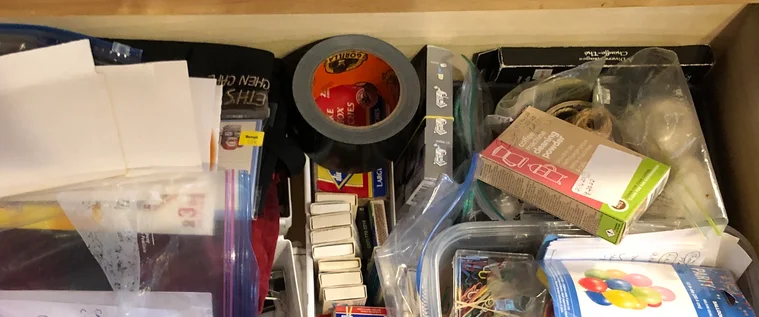
Every grandma had that one kitchen drawer that contained everything from rubber bands saved from newspapers to instruction manuals for appliances long since discarded. This drawer was a chaotic treasure trove of twist ties, orphaned keys to unknown locks, expired coupons, and at least three tape measures. Need a button, a birthday candle, or a crochet hook at a moment’s notice? Grandma could find it in the drawer after just a few minutes of determined rummaging.
The organizational system made sense only to Grandma, who could somehow locate exactly what she needed while explaining that she kept it because “you never know when it might come in handy.” The drawer stuck about halfway open due to decades of overstuffing, requiring a special jiggle-and-lift technique that only family members had mastered. No visit was complete without helping Grandma find something in this drawer, or being asked to put something away in it—a rite of passage that connected generations.
7. The Kitchen Time Machine

Grandma’s kitchen wasn’t just a place to cook—it was a fully operational time machine humming with appliances from another era. The refrigerator made concerning noises but somehow never broke down, while the stove with its push-button controls and deep-well cooker had been faithfully turning out Sunday roasts for generations. The matching metal canister set labeled “Flour,” “Sugar,” “Coffee,” and “Tea” had never been replaced, and the Sunbeam Mixmaster standing mixer was the same one she’d received as a wedding present.
The walls were often adorned with a decorative plate collection or perhaps a set of wooden spoons from various vacation spots, while a clock in the shape of a cat with moving eyes and tail kept somewhat approximate time. Grandma’s cookbook collection consisted of a single Betty Crocker cookbook with food-stained pages that fell open automatically to family favorites, supplemented by recipe cards written in penmanship so perfect it looked like calligraphy. The kitchen table was covered in oilcloth or Formica with chrome edging, surrounded by chairs with vinyl seats that had been repaired with duct tape in places where the covering had cracked.
8. The Linen Closet’s Perfect Organization
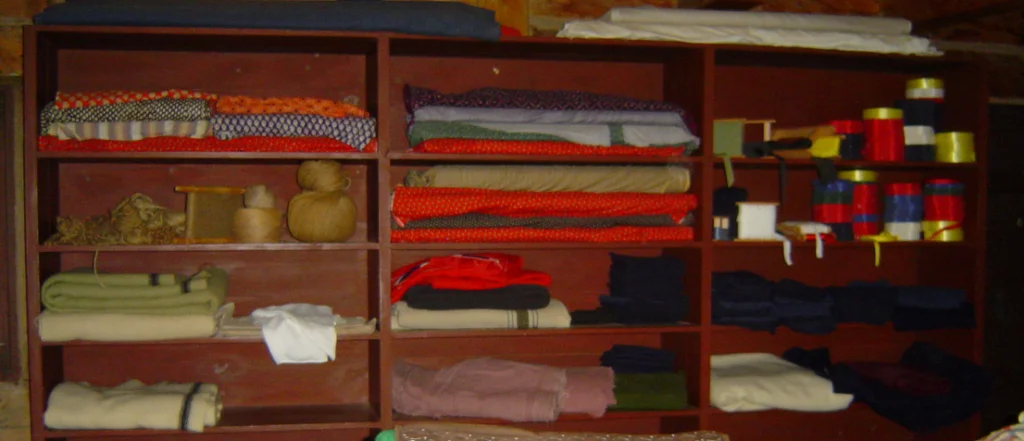
Opening Grandma’s linen closet released the scent of sachets and revealed stacks of sheets and towels organized with military precision. The shelves contained pristine sets of guest towels embroidered with delicate flowers that were too pretty to actually use, alongside tablecloths for every conceivable holiday. Sheet sets were stored inside one of their own pillowcases—a trick Grandma swore by decades before organization experts made it popular on social media.
Each blanket and quilt had its own story: the wedding ring quilt made by Great-Grandma, the crocheted afghan Grandma worked on while watching As The World Turns, and the chenille bedspread that had adorned her bed since the Truman administration. The bottom shelf invariably contained a collection of heating pads, hot water bottles, and various remedies for nighttime ailments, because Grandma was always prepared to care for anyone who might need comfort in the night. Everything smelled faintly of lavender and that peculiar scent of laundry dried on outdoor clotheslines—a smell no modern detergent has ever successfully replicated.
9. The Unchanging Decor
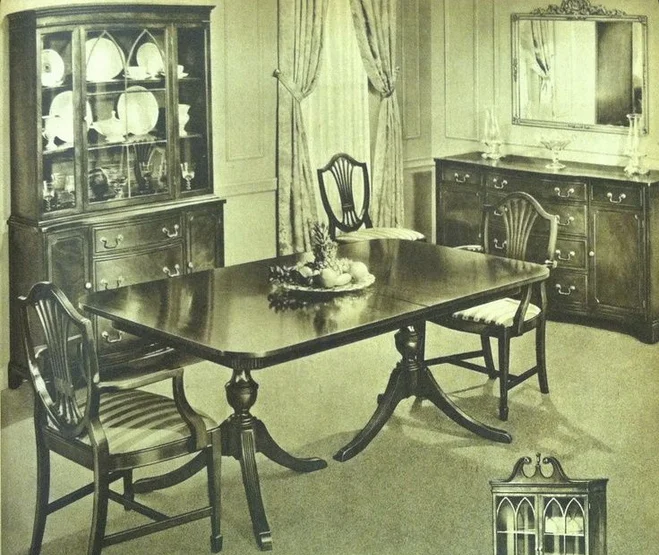
Grandma’s decorating style could be described as “early marriage with occasional updates from the grandchildren.” The walls displayed school photos of every grandchild in chronological order, usually in mismatched frames collected over decades. Handmade crafts from generations of elementary school art projects were displayed with the same reverence as fine art, occupying pride of place on shelves alongside porcelain figurines and souvenir plates from the Black Hills of South Dakota.
The wallpaper in the dining room featured tiny flowers or perhaps a fruit motif that had been applied sometime during the Eisenhower administration, while doilies protected every surface from the devastating effects of a glass placed directly on wood. Window treatments were often multi-layered affairs involving sheers, drapes, and valances that had once been the height of fashion. The overall effect wasn’t old-fashioned to Grandma—it was simply her home, comfortable and familiar, representing the one time in her life when she had been able to decorate exactly as she pleased.
10. The Candy Dish That Never Emptied
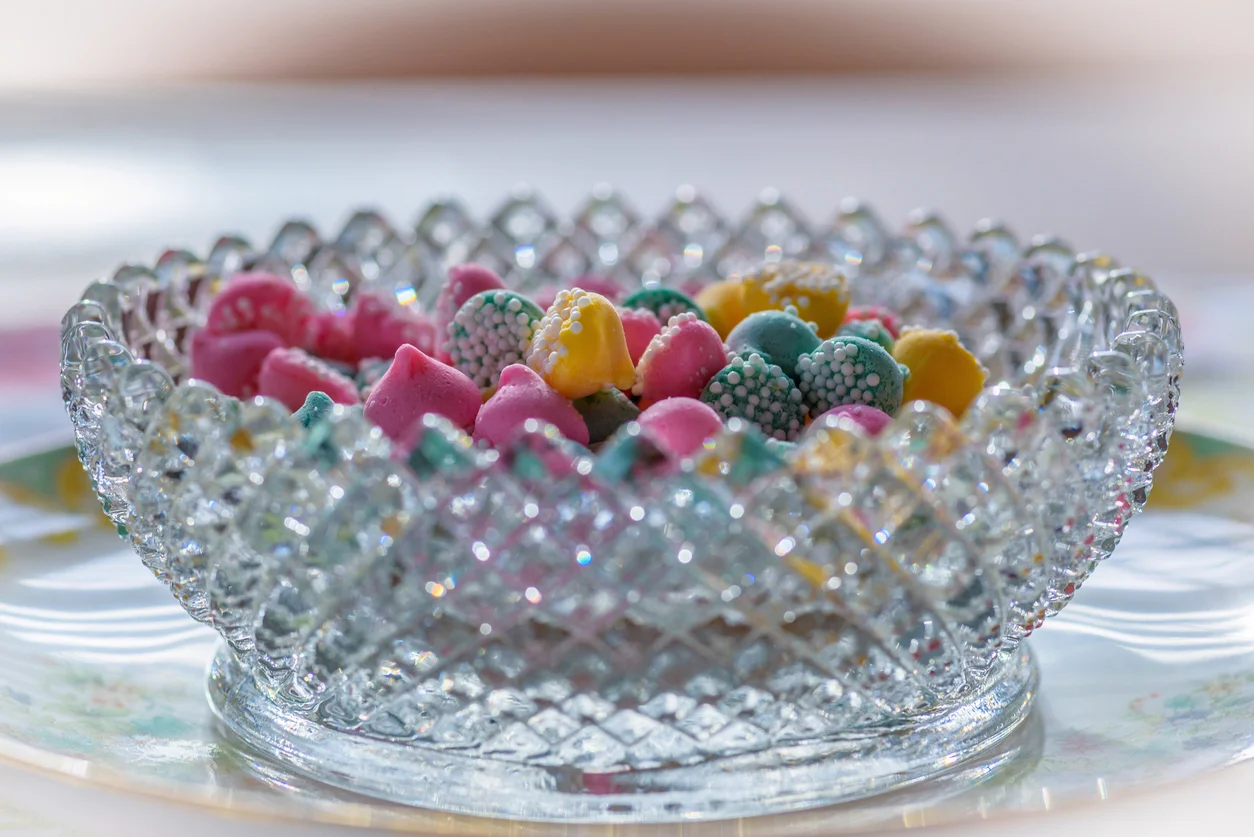
The crystal or cut-glass candy dish on the coffee table contained an ever-present supply of hard candies that seemed to regenerate mysteriously between visits. These weren’t contemporary candies but classics from another era: butter mints in pastel colors, Brach’s butterscotch discs, ribbons of peppermint, or perhaps those strawberry candies wrapped in paper designed to look like the fruit itself. Despite appearing untouched for months, the candy was somehow never dusty or stuck together.
The dish itself was often a wedding present from the early 1950s or a treasured inheritance from Grandma’s own grandmother, making it both a decorative element and a tangible link to family history. The unwritten rule was that you should always ask before taking a piece, even though permission was always granted with a knowing smile—a small ritual that taught both manners and the joy of small pleasures. For many grandchildren, the taste of these specific candies would forever trigger memories of visits to Grandma’s unchanging world, a Pavlovian response connecting generations through the simplest of treats.
11. The Hall Closet of Coats Past
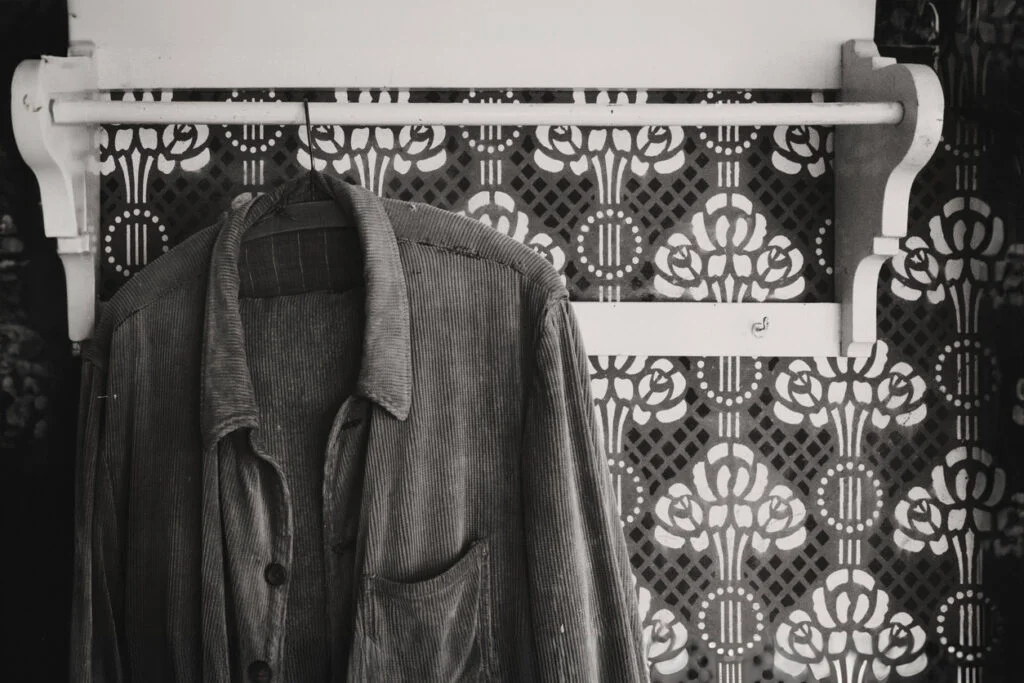
Opening Grandma’s hall closet released the scent of mothballs and revealed a history of outerwear spanning decades. Heavy wool coats from the days when people “dressed” to go downtown hung alongside plastic rain bonnets folded into tiny pouches and galoshes that hadn’t seen a puddle since the Nixon administration. The top shelf held hatboxes containing everything from pillbox hats to Sunday-best creations adorned with fabric flowers and small veils, all perfectly preserved for occasions that rarely came.
The closet floor featured a shoe rack with at least one pair of white nursing shoes from Grandma’s working days, sensible pumps in navy and black for church, and possibly Grandpa’s bowling shoes still in their original bag. Hanging on hooks on the back of the door were umbrellas with wooden handles and metal ribs that actually survived windy days, unlike their modern counterparts. Everything in this closet told a story about an era when people invested in quality garments expected to last for decades—and they did.
12. The Unchanging Christmas Decorations

Christmas at Grandma’s house meant seeing the same decorations that had graced her home since your parent was a child, creating a sense of continuity that defined family tradition. The artificial tree (purchased sometime in the early ’60s when such things became fashionable) was assembled branch by branch, each color-coded limb inserted into a wooden pole while Bing Crosby played on a record player. Ornaments included fragile glass balls stored in their original boxes with dividers, homemade crafts from every generation of children, and possibly some tinsel that had been carefully removed and saved from the previous year.
The nativity set displayed on the buffet featured figures whose paint had worn away in places from decades of little hands arranging and rearranging them. Window decorations included plastic candles with orange bulbs that flickered unconvincingly, while every flat surface held greeting cards from friends and family—some from people who had passed away years ago but whose cards were too precious to discard. The most magical element was always something that moved: a ceramic Christmas tree with tiny plastic lights, a music box that played “Silent Night,” or a cardboard village with a train that actually ran around it when plugged in—all relics from an era when such novelties represented the height of holiday technology.
The beauty of Grandma’s unchanging house wasn’t just in the nostalgia it evoked but in the stability it represented in our rapidly changing world. While our everyday lives were filled with the newest gadgets and trends, Grandma’s house remained a constant—a place where the past was honored simply by being preserved. Those visits taught us something valuable about the comfort of tradition and the importance of objects that carry family history. Now, as adults, many of us find ourselves inexplicably drawn to vintage Pyrex at antique stores or feeling disproportionate joy at finding a candy just like the ones in Grandma’s dish—not because these things were objectively special, but because they connect us to a simpler time when love was expressed through permanence rather than constant upgrades.



